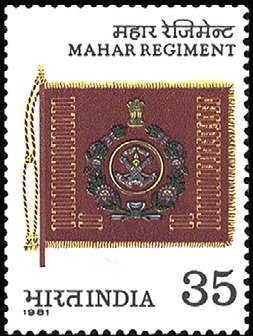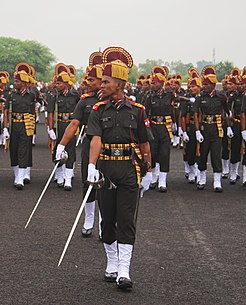
The Jat Regiment is an infantry regiment of the Indian Army, of which it is one of the longest-serving and most decorated regiments. The regiment has won 19 battle honours between 1839 and 1947, and post-independence it has won five battle honours, including 2 Victoria Cross, 8 Mahavir Chakra, 8 Kirti Chakra, 34 Shaurya Chakras, 39 Vir Chakras and 253 Sena Medals. During its 200-year service history, the regiment has participated in various actions and operations in India and abroad, including the First and the Second World Wars. Numerous battalions of the Jat Regiment, including the 14th Murray's Jat Lancers, fought in the First World War.
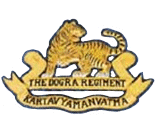
The Dogra Regiment is an infantry regiment of the Indian Army. The regiment traces its roots directly from the 17th Dogra Regiment of the British Indian Army. When transferred to the Indian Army like its sister regiments, the numeral prefix was removed. Units of the Dogra Regiment have fought in all conflicts that independent India has been engaged in, making it one of the most prestigious and most decorated regiments of the Indian Army.

The Brigade of The Guards is a mechanised infantry regiment of the Indian Army. It was raised as the first "all India", "all class" infantry unit of the Army where troops from all parts of India serve together, as opposed to other regiments that recruit from specific regions, ethnic groups or religions.

The Parachute Regiment is an airborne and special forces regiment of the Indian Army. It was raised in 1945 as part of the British Indian Army but was disbanded after World War II and was re-raised in 1952 as part of the Indian Army. Currently it consists of fifteen Special Forces, two Territorial Army and one Rashtriya Rifles battalions.

The Kumaon Regiment is one of the oldest infantry regiments of the Indian Army. The regiment traces its origins to the 18th century and has fought in every major campaign of the British Indian Army and the Indian Army, including the two world wars, and is one of the highest decorated regiments of the Indian Army.

The Punjab Regiment is the second oldest regiment still in service in the Indian Army, and is the most senior regional infantry regiment. It was formed from the 2nd Punjab Regiment of the British Indian Army in 1947 and has taken part in various battles and wars since, winning numerous honours for the same.
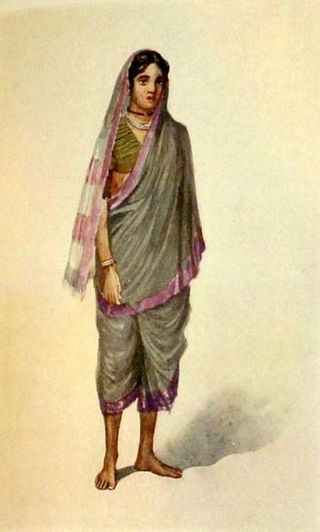
Mahar is an Indian caste found largely in the state of Maharashtra and neighbouring areas. Most of the Mahar community followed B. R. Ambedkar in converting to Buddhism in the middle of the 20th century. As of 2017 the Mahar caste was designated as a Scheduled Caste in 16 Indian states.

The Rashtriya Rifles is a counter-insurgency force in India, formed in 1990, to specifically serve in the Jammu and Kashmir region. They also maintain public order by drawing powers from the Armed Forces Special Powers Act, 1990 (AFSPA). The RR was raised by the Indian Army by reconstituting two corps. Its personnel are provided by the Indian Army on deputation. The RR is commanded by an Additional Directorate General of Rashtriya Rifles.
The Sikh Light Infantry is a light infantry regiment of the Indian Army. The regiment is the successor unit to the 23rd, 32nd and 34th Royal Sikh Pioneers of the British Indian Army. The regiment recruits from the Sikh community of Himachal Pradesh, Punjab and Haryana states of India. The versatility of the Sikh Light Infantry has seen the regiment conduct operations from conventional warfare on the Siachen Glacier, the highest battlefield in the world, to counter-terrorism. Units of the regiment have also been deployed as part of the United Nations Emergency Force. The regimental motto is "Deg Tegh Fateh", meaning "prosperity in peace and victory in war". The motto has great significance with the tenth Sikh guru, Guru Gobind Singh, with whom the Mazhabi community is very closely associated, Guru Gobind Singh named them mazhabhi as in faithful for their dedication to do good. The regiment's cap badge is a chakram or quoit, with a mounted kirpan. The insignia was designed to honour the Mazhabi community's Akali Nihang ancestry.

The Assam Regiment is an infantry regiment of the Indian Army. The regiment consists of 25 battalions: 15 regular battalions, 3 Rashtriya Rifles battalions, 5 Territorial Army battalions & 2 Arunachal Scouts battalions. It recruits exclusively from all the eight Northeastern states of India.
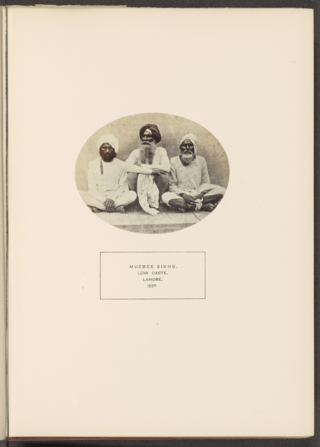
Mazhabi Sikh is a community from Northern India, especially Punjab region, who follow Sikhism.The word Mazhabi is derived from the Arabic term mazhab, and can be translated as the faithful. They live mainly in Indian Punjab, Rajasthan and Haryana.

Major Ramaswamy Parameswaran, PVC, Parry to his colleagues, was an Officer of the Indian Army who was awarded the Param Vir Chakra, India's highest military decoration, for his bravery.
The 11th Indian Infantry Division was an infantry division of the Indian Army during World War II. It formed part of Indian III Corps in the Malaya Command during the Battle of Malaya. The division was re-raised on 1 April 1965 and is presently part of the XII Corps of Southern Command. It is presently responsible for safeguarding the borders with Pakistan along Southern Rajasthan and Gujarat.

The Territorial Army (TA) of India is an auxiliary military organisation of part-time volunteers that provides support services to the Indian Army. It is composed of officers, junior commissioned officers, non-commissioned officers and other personnel holding ranks the same as in the Indian Army, who also have civilian occupations. The role of the TA is to "relieve the regular army from static duties and assist civil administration in dealing with natural calamities and maintenance of essential services", and to "provide units for the regular army as and when required".

The regiments of Bengal Native Infantry, alongside the regiments of Bengal European Infantry, were the regular infantry components of the East India Company's Bengal Army from the raising of the first Native battalion in 1757 to the passing into law of the Government of India Act 1858. At this latter point control of the East India Company's Bengal Presidency passed to the British Government. The first locally recruited battalion was raised by the East India Company in 1757 and by the start of 1857 there were 74 regiments of Bengal Native Infantry in the Bengal Army. Following the Mutiny the Presidency armies came under the direct control of the United Kingdom Government and there was a widespread reorganisation of the Bengal Army that saw the Bengal Native Infantry regiments reduced to 45.
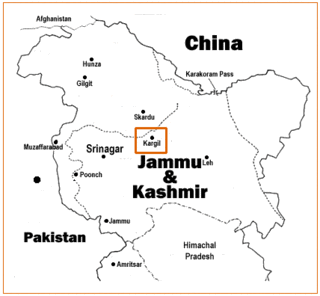
The Kargil War order of battle (KWORBAT), is a deposition and systematic combatant structure of the Indian Army troops and the unified Pakistan Armed Forces combat commands, active in the Kargil region in 1999, during the Kargil War. The Indian Army orbat is based on the publications provided by the Indian military authors, news media and official sources.

The Battle of Koregaon was fought on 1 January 1818 between the British East India Company and the Peshwa faction of the Maratha Confederacy, at Koregaon Bhima.

The Officers Training Academy (OTA) is a training establishment of the Indian Army that trains officers for the Short Service Commission (SSC). The 49-week course at the OTA prepares graduates for all branches of the Army, except for the Army Medical Corps. Established in 1963, the first academy is located in Alandur, a southern neighbourhood of Chennai. OTA chennai has an impressive tally of gallantry award including 1 Param Vir Chakra, 8 Ashoka Chakra, 10 Maha Vir Chakra, 22 Kirti Chakra, 63 Vir Chakra, 119 Shaurya Chakra and 587 Sena Medal earned by the officers commissioned from this academy bears testimony to the Valor and dedication displayed by the Alumni. A new academy was set up at Gaya in 2011; but was given the go-ahead in December 2019 to be disbanded.

The 54th Infantry Division is an Infantry division of the Indian Army. The Division was raised as an Infantry Division, but was converted into a Reorganised Amphibious Formation (RAMFOR) in 2011. It is currently the only division of the Indian Army which carries out Amphibious warfare. The division is headquartered at Secunderabad in Telangana and is a part of XXI Corps. The Division is commanded by a Two-star General Officer of the rank of Major General titled General Officer Commanding (GOC).

The Infantry of the Indian Army is the largest combat arm of the Indian Army. It consists of personnel, who historically have engaged in ground combat on foot. It presently also consists of mechanised and airborne infantry.


